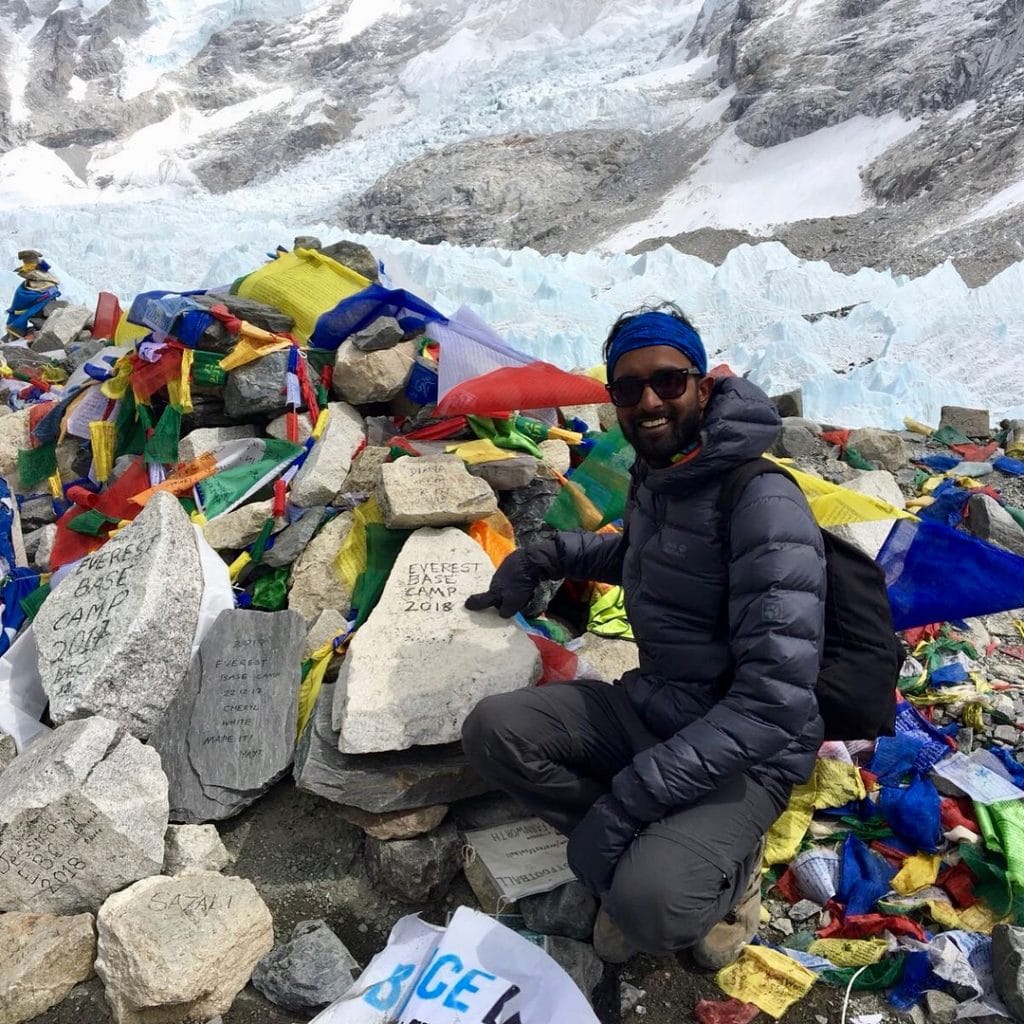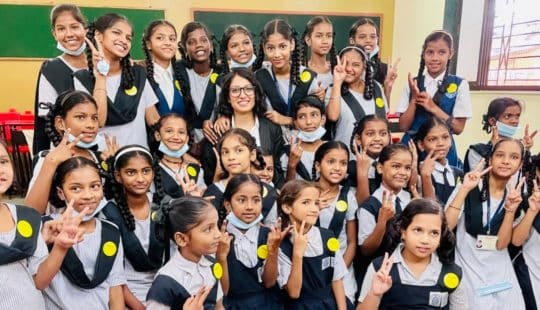Ask Kiran Venkataramanappa what SAP means to him and his answer is profound. The company, he says, has given him his identity.
“I’ve spent fifteen years here,” he says, “and that’s more or less my whole career. I don’t know if anyone else has said this already – but SAP has literally shaped who I am. When I started out as a software engineer like many others, my intention was simply to pay my home loan and bring security to my life, while at the same time doing justice to the education that I’ve invested in. At SAP, I certainly got all of that, like thousands of others – but I’m not exaggerating when I say I also found my own soul.”
 Bengaluru-based Kiran is a Development Manager at SAP Labs India and drives the SAP Autism at Work
Bengaluru-based Kiran is a Development Manager at SAP Labs India and drives the SAP Autism at Work
He says the many opportunities would probably not have come his way if he had been employed elsewhere. “For instance, Diversity and Inclusion has been a big part of my life for the past six or seven years. It has completely changed the way I look at society and the people whom I meet. I have a family, I have two kids, so there’s not too much spare time I have outside office hours to devote to a cause or to a charity, purely as a private citizen. I certainly don’t call D&I a charity but this certainly gives me a channel by which I can give back to society. And the fact that it’s a part of my job, even though it’s not my primary role – there is nothing like it.
“I handle the inclusion pillar and predominantly Autism at Work and beyond that, I work with people with disabilities, shaping the way in which SAP as an employer can welcome them and make them feel comfortable. We are an inclusive employer, which we’ve always intended to be – and we rightfully spread the message that we are. That’s the space I work in, within D&I.
“It’s extremely meaningful when we meet some of the parents of our autistic colleagues and some of them even have moist eyes when they talk to us. They say, ‘Ten years ago we could never have imagined that our son or daughter could ever have any kind of future beyond the care that we give them.’ That’s a really powerful statement, isn’t it? The parents also tell us that their major commitment was to ensure the safety and wellbeing of their autistic offspring but that their biggest fear was what would happen to their offspring because they would outlive each parent. Who would subsequently care for them and what would happen to them were the big questions that had no answers at all.
“They would tell us, ‘We know we can keep them secure while we are alive, but of course the big question is what will happen to them after that.’ But now they say to us that SAP has given them an answer to that. And from a societal point of view, it even goes much further – generally in these cases it is the mother who looks after an autistic child, but when the mother passes away, there is literally no one else who has that level of empathy. Now, in addition to being really very grateful to SAP, they say they are filled with a new level of energy that compels them to reach out to the various parents’ communities and the schools in order to say, ‘Hey, we never gave up hope, and neither should you.’
“But it goes much deeper, really. Apart from the hope, it’s also the understanding that filters down. Everyone on the autism spectrum belongs to the same society that we do. They absolutely belong in every way, no question about it. All it takes is to have those eyes to recognize what they are good at, because each of them has an ability to contribute. This is what they now believe in, and just to see this belief – a type of belief that previously did not exist in our society – is phenomenal. For me, to be able to do that as part of my role at SAP, is what I stand for.
 Kiran illustrates how SAP changes lives through the core values of Diversity & Inclusion
Kiran illustrates how SAP changes lives through the core values of Diversity & Inclusion
“To give people genuine hope is very uplifting, especially because autism is not widely understood in India. We are now looking at employing candidates who are in their mid to late 20s, and the common reaction among their families is that they are now filled with positivity because there is finally a future for them. This in turn creates the overall awareness that inclusion is certainly possible, even though we cannot possibly do it for everyone.
“This is really a core value for the company we work for, and we’re not doing it just for media coverage or attention. If the impetus is wrong, then no agenda that is as wide and as meaningful as this could possibly hope to survive in a meaningful way.
“This is one way to give back to society, because we are dealing with real lives and changing them in a way where we can actually see the impact. This entire program is all about real lives, real examples, and genuine belief that this can be done in a corporate environment. To me, that really is inclusion. While we preach diversity and inclusion – as do some other companies too – the essential difference is that we follow it through to the maximum possible extent.
“This can be seen in the simplest of cases. When we were designing a policy for people with disabilities, we did an accessibility audit of the premises here, just to check that somebody in a wheelchair would be able to go to each and every corner of the office. As it turned out, there were very simple things that had never occurred to us previously. For example, the emergency assist button in the lift has to be positioned at a height where a person in a wheelchair can still reach it. But there was one which was quite high and completely out of their reach because it was clearly designed with only able-bodied people in mind. Is that of any use at all when the lift stops and that person in a wheelchair – especially if he or she is alone in the lift – needs to reach the button?
“And at that point we realized that there is an indoor cafeteria, where the lunch is served, and there was a dais without a ramp. So when we did the accessibility audit, we partnered with the Facilities team and said, ‘These are some of the things which we have to change.’ After that, we saw a lot of changes happening here within the campus, to the extent where the security guards or the emergency response teams were also educated to evacuate any people in wheelchairs in case of an emergency.
“We have even set up the grievance committee, for example. If a person with disability is in a wheelchair and is discriminated against in some way, he or she now has a place to go to and somebody to report it to. To us, this is as important as an anti-harassment policy, for example. It’s all about awareness.
“We got in touch with this fantastic, enthusiastic kid some years ago and then this person joined SAP as part of this program. There was a lot of handholding to be done, to the extent that the person literally had to be reminded that when he was sick it was mandatory to call someone in the office and say hey, I’m not going to be in the office today. The beauty of all of this is that it lets you look at the world in a different way because you start to appreciate the differences in people much more than you would otherwise.
“Everyone on the spectrum is different. That’s no exaggeration. For Person A, maybe you just talk about what needs to be done; for Person B maybe you need a checklist to be printed and placed in front of that person where that person looks at the list and says okay, now it’s 3pm and I have to do this, or it’s 4:30pm and I need to catch a bus to go home. But the most uplifting fact is that a person on the spectrum has learnt to adapt to a workplace, to live independently and has taken the bold step to go ahead and start a family. That shows a real journey on their part.
“My dream at SAP before I retire is to see that our employees treat any form of disability as something that is, say, no different from a person wearing spectacles, and that we don’t say ‘this is a disability’ any more. The day I see that happening, that’s when I know we’ve done a wonderful job as an inclusive employer.”
This is number 94 in a series of employee stories to mark SAP’s fourth decade in APJ.



